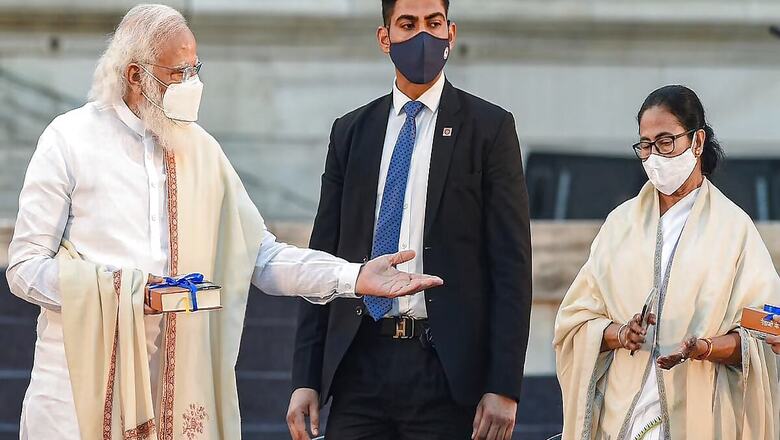
views
In India, the politics of identity and religion are inextricably tied to each other. One can, however, argue that over the last decade, these identities have become more pronounced. Consequently, election campaigns too are being rolled out on the question of who (which party) is representing (serving) whom. The campaign in poll-bound West Bengal is no different where welfarism seems to have been pushed aside by religious slogans.
In a state with 27 per cent Muslim population, a question on top of everyone’s mind is—who will they vote for this time? While Asaduddin Owaisi has said that his party, the AIMIM, will contest Bengal elections, Abbas Siddiqui’s newly-formed Indian Secular Front (ISF) has joined hands with the Congress-Left alliance. But can Owaisi and Siddiqui’s entry divide the so-called vote-bank of Mamata Banerjee-led Trinamool Congress?
Muslims in West Bengal: Past Voting Trends
West Bengal has the third-largest Muslim population in India after Jammu & Kashmir and Assam. According to 2011 Census, the state has 27 percent Muslim population, but some reports claim the figure could be close to 30 percent.
ALSO READ| Days of ‘Khela’ and ‘Boma’: What Bengal Needs is an End to Decades of Political Violence
For a long time, the Left Front enjoyed the support of the Muslim vote across the state, but the pattern changed from 2011 assembly election. The Lokniti-CSDS survey data (the only publicly available authentic historical survey data) suggests that till 2011, the Left Front’s Muslim vote share was more than 40 percent, which came down to 10 per cent in the 2019 Lok Sabha elections. The same survey data (see in the chart 1) also suggests that the Muslim vote has consolidated in favour of the All India Trinamool Congress (AITC). In the 2019 Lok Sabha elections, 70 per cent Muslim supported Mamata Banerjee’s party. Within a span of eight years (2011 to 2019), the Trinamool Congress doubled (from 35 per cent to 70 per cent) its support base, in terms of vote share, among the Muslims.
Chart 1: Party-wise Muslim voting pattern in West Bengal
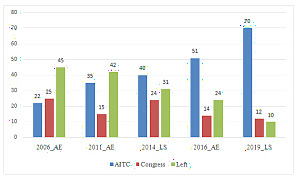
Note: All figures are in per cent and rounded-off. Data source: Lokniti-CSDS published here and here
The polarisation of Muslims in favour of the Trinamool Congress can also be understood in terms of the vote share of parties in 125 assembly constituencies, which have more than 20 percent Muslim population. Among these, 59 assembly constituencies have more than 40 percent Muslim population. The Trinamool Congress’ overall vote share in the 2019 elections was 43 per cent, but it went up to 46 per cent in constituencies with more than 20 percent Muslim population (see chart 2). When compared with the 2014 Lok Sabha elections, Mamata Banerjee’s party gained 10 per cent more votes (from 36 per cent in 2014 to 46 per cent in 2019) in constituencies with more than 20 per cent Muslim population. This gain was sharper in constituencies with more than 40 per cent Muslim population. Here, the party registered a 17 per cent jump in vote share, from 28 per cent in 2014 to 45 per cent in 2019.
In contrast, the Bharatiya Janata Party (BJP), which got 40 per cent of the total votes polled in the state in 2019 Lok Sabha elections, managed a 33 per cent vote share in constituencies with more than 20 per cent Muslim population. However, the BJP, in general, has been able to increase its vote share (by 19 per cent) in these constituencies when compared to its performance in the 2014 Lok Sabha elections.
An important observation regarding the BJP’s vote share in these 125 constituencies is: as the proportion of the Muslim voters in the constituency increased, the vote share of the BJP reduced. It clearly indicates polarisation on the basis of religion in the state, as some ground reports and analysis on Bengal poll campaign narrative have suggested.
Chart 2: Party-wise vote share in assembly constituencies with substantial Muslim electorate
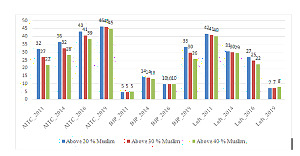
Note: All figures are in per cent and rounded-off. Data Source: ECI
Data analysis suggests that Muslims have gravitated towards the Trinamool Congress and the party is hoping to ride this strong support base and retain power in West Bengal. However, the things are not so clear or linear. The entry of the All India Majlis-e-Ittehadul Muslimeen (AIMIM) and the Indian Secular Front (ISF), led by Abbas Siddiqui of Furfura Sharif, in the West Bengal political arena has made this contest more interesting. How?
Can AIMIM, ISF Impact Bengal Poll Results?
Asaduddin Owaisi’s AIMIM has announced that it will contest the West Bengal assembly election. The party’s recent gains in Bihar, where it won five assembly seats, have three-fold significance. First, the party has made an inroad in the Seemanchal area, which has a high Muslim population. Second, the party (and especially its chief, Asaduddin Owaisi) has a strong following among the Muslim youth. Third, the Lokniti-CSDS post-poll survey data reveals that of the total votes the AIMIM, the Bahujan Samaj Party (BSP) and the Rashtriya Lok Samta Party (RSLP) alliance received in the third phase of election, more than 90 percent were Muslim votes. Seemanchal went to polls in the third phase, and most of the seats the AIMIM contested on were in this region. This means, Muslims have found an alternative to the established party here.
In Bengal, the AIMIM would consider contesting from North Bengal (which is adjacent to Seemanchal and Jharkhand). These areas have Hindi- and Urdu-speaking Muslims in districts like Malda, Uttar and Dakshin Dinajpur, Cooch Behar, Alipurduar. These districts have a significant percentage of Muslim population. If the AIMIM can repeat its Bihar performance and position itself as an alternative to the existing parties among Muslims, then the outcome would be interesting to watch.
Another entrant in West Bengal politics is the Indian Secular Front, led by Pirzada of Furfura Sharif Abbas Siddiqui. Unlike Owaisi and his party, Siddiqui and the ISF are making their political debut this time; however, Siddiqui’s taken a line similar to Owaisi—what have secular parties done for Muslims?
ALSO READ| Bengal: By Snatching Muslim Votes from Mamata, Left-Congress Ally Abbas Siddiqui May Help BJP’s Cause
South Bengal has a Bengali-speaking Muslim population and is a stronghold of Mamata Banerjee-led Trinamool Congress. The ISF, which has entered into an alliance with the Left Front and the Congress, is eyeing a significant share of this Muslim vote, especially among the devotees of Furfara Sharif in districts like Nadia, North 24 Parganas, South 24 Parganas, and Hooghly.
At this point, it would be naïve to predict the percentage of Muslim voters the AIMIM and the ISF can pull away from Mamata Banerjee’s Trinamool Congress. More support for these two parties in Bengal would harm the prospects of Mamata Banerjee.
Of course, the bigger question remains—who will win West Bengal?
Read all the Latest News, Breaking News and Coronavirus News here












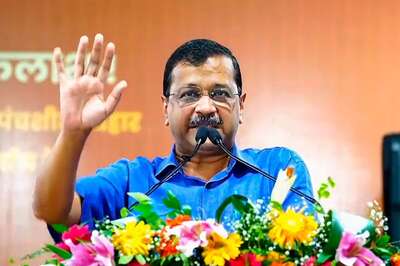


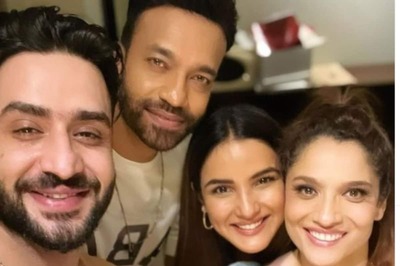
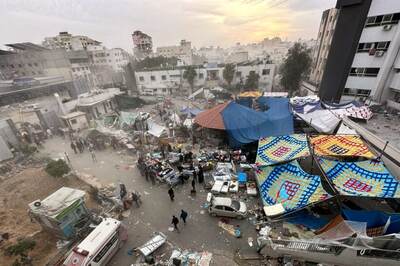

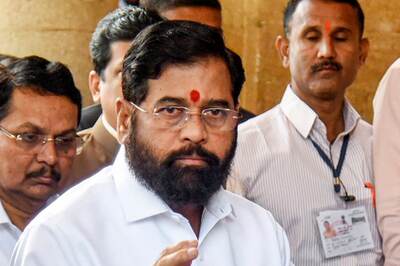

Comments
0 comment